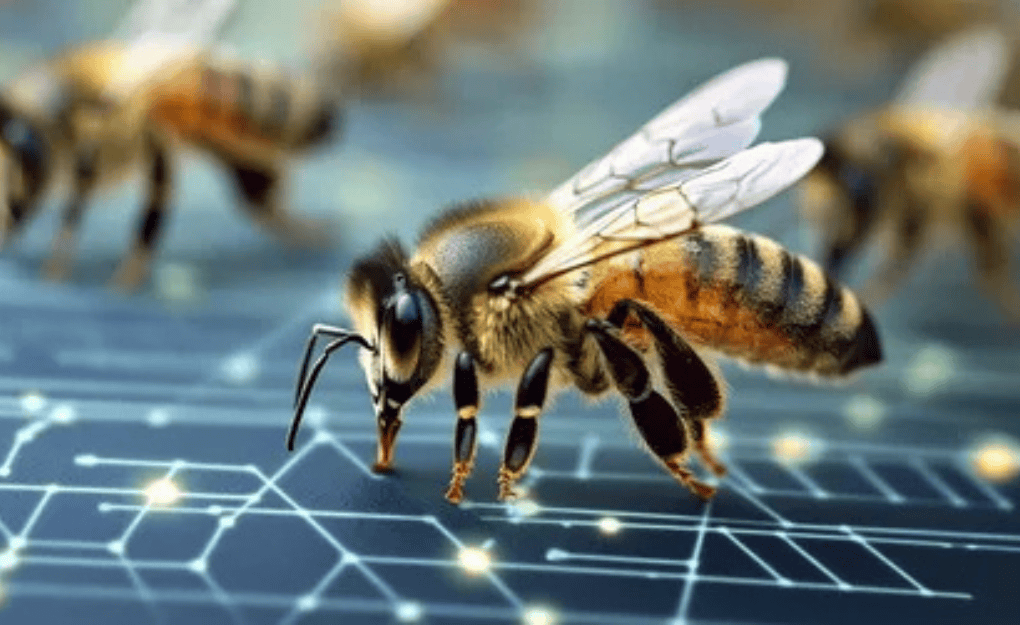In a groundbreaking development in the field of bio-robotics, Chinese researchers have unveiled the world’s lightest brain-controlled bee device, a miniature marvel that enables precise control over a bee’s movement. Weighing just 74 milligrams—lighter than the nectar a bee typically carries—this device marks a significant leap toward creating bio-hybrid robotic systems. Mounted on a bee’s back and interfaced directly with its brain via ultra-fine needles, the system uses electrical signals to guide the insect’s walking and flying movements. The innovation opens up new frontiers in surveillance, disaster management, and advanced robotics.
Development and Design: Lightweight Engineering for Living Systems
The brain-controlled bee device was developed by scientists at the Beijing Institute of Technology and detailed in the Chinese Journal of Mechanical Engineering in June 2025. Unlike previous prototypes, which were bulkier and more intrusive, this new model features an ultra-light, flexible film circuit that conforms to the insect’s body.
The circuit film is as thin as an insect wing and embedded with multiple microchips capable of processing infrared remote control commands. This flexibility allows for more precise control while maintaining the bee’s natural balance and flight ability. The combination of form-fitting hardware and intricate electronic architecture represents a major upgrade in integrating living organisms with robotic systems.
Functionality and Testing: Direct Brain Communication
At the core of the brain-controlled bee device is a tri-needle system that penetrates the bee’s brain to deliver finely tuned electrical pulses. These pulses act as artificial neural cues that guide the bee to turn, move forward, or reverse.
In controlled environments, the device achieved an impressive 90% success rate in maneuvering bees along predefined paths. The same technology was successfully applied to cockroaches, showcasing its adaptability across different insect species. However, researchers encountered some variability in behavior and signs of fatigue in test subjects, particularly with repeated usage in cockroaches.
Despite these limitations, the testing phase confirmed the system’s potential for high-precision insect control, laying the groundwork for more refined versions.
Advantages Over Traditional Robotics
One of the most striking benefits of the brain-controlled bee device is its ability to harness the bee’s natural capabilities. Bees can carry loads up to 80% of their body weight and fly for distances exceeding 5 kilometers. These traits offer unique advantages over synthetic drones, especially in covert or resource-limited environments.
Unlike conventional machines, insect-based robotics can operate stealthily, blending into their surroundings without drawing attention. This makes them ideal for:
- Urban combat surveillance
- Counterterrorism operations
- Narcotics interdiction missions
- Search-and-rescue in disaster zones
- Monitoring environmental hazards
Their small size and natural agility allow access to tight spaces and dynamic terrains where traditional robotics might struggle.
Current Limitations and Road Ahead
Despite its promise, the brain-controlled bee device still faces technical hurdles. A major limitation is its reliance on a wired power source. Existing wireless batteries are too heavy for insects, compromising their ability to fly. Moreover, the precision of responses can diminish over time due to fatigue or inconsistencies in nerve stimulation.
Researchers aim to overcome these issues by optimizing the stimulation patterns to ensure consistency and longevity in performance. Future designs may include ultra-light, bio-compatible power solutions and improved AI-based signal modulation to interpret environmental cues in real-time.
Plans are also underway to integrate sensory capabilities that allow the bee to detect temperature, gases, or chemicals. This would expand its usefulness in high-risk environments like collapsed buildings or chemical spill zones.
Ethical Considerations and Future Implications
While the brain-controlled bee device opens new possibilities, it also raises ethical questions regarding the use of living organisms for technological purposes. The researchers acknowledge these concerns and emphasize the need for ethical frameworks to govern bio-hybrid robotics.
Nonetheless, this innovation is poised to revolutionize fields such as surveillance, security, and environmental monitoring. As technology advances and ethical practices evolve, we may see a future where bio-robots become standard tools in various industries.
Conclusion
The brain-controlled bee device represents a paradigm shift in robotics and neuroscience. By seamlessly integrating living insects with advanced electronic control systems, researchers have created a tool with unprecedented agility, stealth, and potential. Though still in the early stages, this technology is a bold step toward the future of robotics—one that buzzes with promise.




